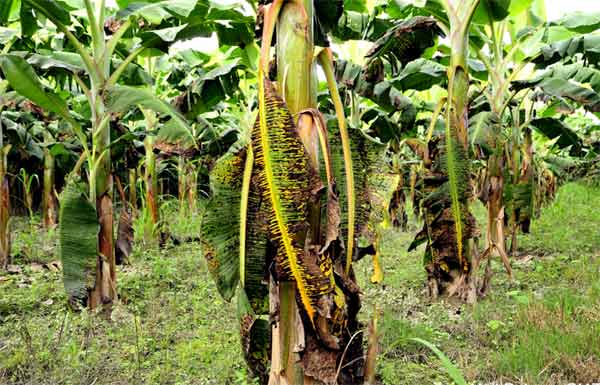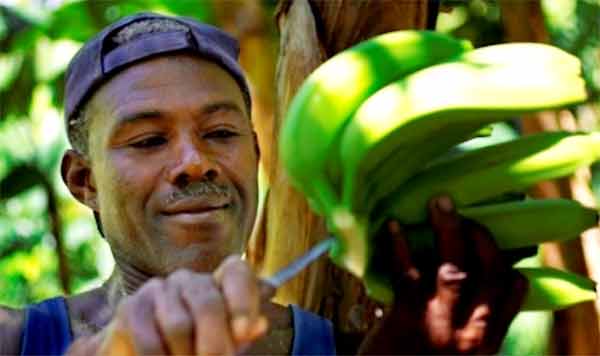
IN Part 1 of this article reference was made to the existence of several estates throughout the Island which were highly diversified with tree crops. Reflecting on these in a discourse with Calixte George whose observations and dealings with the rural landscape of St. Lucia generally coincided with mine, we noted the following: Most of these were mid-sized estates varying in size around 100 to 500 acres; they varied in topography and cultivation pattern varied accordingly; they were generally owner managed as compared to the hierarchical management structures of the larger sugar or banana estates referred to earlier; arising from these features, these mid-sized estates often reflected their own unique agricultural and rural characteristics. Older generations will recall the following well known examples of these mid-sized estates: Soufriere estates of the Duboulay family; Union Vale estate of the Johnsons; La Dauphin estate of the Ghidharry-Adjodha families;, Balenbouche estate of the Floissac family; Londonderry and Giraud estates of Ralph Giraudy; Parc estate of David Barnard ; Patience estate of Grace Augustin; Mahaut estate of Elwin Augustin and subsequently of John Compton; Beauchand estate of Harry Atkinson etc.
In the context of reflections on the impact of these estates on the rural environment of the time, Patience estate of Grace Augustin may be considered to have represented an iconic example. Travellers on the Castries to Vieux Fort highway of that time were well acquainted with the classical country estate house which served as a beacon at the top of the sharp bend of the Patience hill when approaching from either end. Flanking this road, before and after passing this mansion, were diversified stands of tree crops , dominated by cocoa trees but included coffee , coconuts, varieties of grafted mangoes and other kinds of exotic crops, all in plain view of the traveller. In time, bananas became more dominant in visibility as the route moved southwards. This panorama of diverse economic plants and the landscape did not only impress lovers of agriculture but is also reputed to have provided some level of inspiration to prominent artists such as Dereck Walcott and Dunstan St.Omer who were among the estates’ several prominent guests through the years. The estate house also played a significant role as a nascent stage for exposing the folk-song talents of Sessene Descartes.
The historic features of these estates and the more current banana production efforts on estates of Chris Cox(Vanard) , Rolly Fernand( Fond) and Ranju farm (La Caye) as prominent examples, indicate that mid-estates can play a leading role in the “Way Forward” for resuscitating agricultural glory. Most of these are remnants of partitioned parent estates, but are still of sufficient size to provide the resource capabilities associated with mid-sized estates. These mid-sized estates generally exist in proximity to smaller farms which were also partitioned from the parent estate and more or less share the same watershed or valley as the parental estate. These mid-sized estates therefore have the potential to be equipped with machinery and equipment and other crop husbandry and personnel resources to be self -supporting units of agricultural production.
Some of these mid-sized estates can constitute the core producers of banana supply for Winfreshand insome form of cooperative effort with neighbouring small farms where possible, constitute a larger base of banana supply to bolster Winfresh’s effort to secure a marketing foothold in the UK for Windward Islands bananas. In the context of the ‘Way Forward’, certain mid- size estates such as Fond Doux, Coubaril and Stone Field estates already contribute to the rural based development thrust by projecting a romantic agricultural past through their agricultural/ touristic activities.
Some mid- sized estates also have potential to be centres for initiating and demonstrating new developments in agriculture. These can range from introduction of a new crop, variety or cropping system in the diversification efforts and to test new packaging systems for exporting an agricultural product. An example of this was the role played by Dennery Farm Co when the banana industry was developing Field Packing systems and later in trials with new boxes for the banana export market. A mid- estate remnant of Dennery Farm Co. still exists as Ranju farm, and should be maintained as such for possible agricultural development roles as outlined earlier. It should be of considerable concern that mid-sized farms may continue to decline, particularly in the productive valleys, unless measures are put in place to arrest this. The impact of storms such as Tomas and the Christmas trough on Fond and Troumaseé estates are examples of the threats to the sustainability of their productivity and suggest a need for National Government Intervention towards this end.
Government should put in place measures to limit further partitioning of productive mid-sized agricultural estates. A Land Use Authority should be instituted to protect the integrity of lands which have the production potential of Classes 1 and 2 soils such as exist in the LaCaye ,Roseau, Cul de Sac, Fond, Troumassee valleys and other flat land areas with good agricultural soils and a tradition of agricultural production. The ongoing transformation of Cul de Sac with its productive agricultural soil, towards commercial development, is an example of the need for rationalization in the planning of commercial and industrial development and protecting the future of agriculture.

The earlier development of Field Packing for the purpose of facilitating banana exports, in a general sense served as an effective informal instrument of Land Reform as it allowed for initial economic success of small farm development. The existence of SLBGA at that time provided a structural framework for training the farmers, facilitated provision of inputs and marketing arrangements were in place. As the banana industry has become significantly diminished in scale and there is no corresponding administrative structure in place presently, the economic wellbeing of small farmers is now more challenged. Agricultural diversification provides some opportunities for small scale farming such as through intensive cultivation of high valued crops. Reference was made in the earlier publication, ‘Agricultural Glory Days’ to the need for a framework of Government policy to guide and support initiatives of the small farmers. Small farms provide scope for variety in production activity within a community as each farmer/owner may have his own preference for production. Small farm communities are likely to have opportunities for farmer interaction which can transform into some cohesion towards their economic and social development eg. formation of Cooperatives like Black Bay, Bellefond etc.
An area of needed cohesion within a community of small farmers and particularly those occupying valley lands which originally had a large estate custodian, is to address the drainage and other infrastructural needs of these lands. Governments have borne the responsibility for major drainage works and river realignment in some of the valleys such as Dennery Farm Co and the Cul de Sac valley respectively with aid from EDF. Such efforts of Government should be continued especially in the wake of storms such as Tomas and the Christmas trough. Large estates had or were expected to have had the machinery and resources to carry out the lateral and subsidiary drainage within the valley areas of production. Such maintenance requirements would continue to exist within the small farm valley community but individual farmers would generally not have the capacity to own and operate the required machinery. New ways have to be found to address this continuing need in the interest of preservation of productive land use.
The involvement of The Ministry of Agriculture and Lands seems to be the most appropriate avenue for addressing the drainage and land cultivation needs identified above. This may require Government to revisit the provision of an Agricultural Engineering service as existed with good effect, in earlier times. This should include provision of machinery service in addition to planning and supervising the works. I am reliably informed that dependence on the Private Sector for providing this service accrues high costs and does not provide the required engineering proficiency. Farmers may be required to bear some costs for the services but their participation would provide an ongoing local structure for storm damage mitigation and subsequent rehabilitation in each farming community. Calixte George who still farms, is persistent in his view that the only way that Agriculture can be revitalized and prosper in the future, is by the Ministry of Agriculture providing a well -equipped and managed engineering service.
The efforts for small farmer co-operation in a community could lead to grouping themselves into ad hoc or formal bodies to seek whatever assistance, service, or attention that could be mutually beneficial. In addition to drainage works, community based interaction with the Ministry of Agriculture can also be useful in application of production technology such as combating Black Sigatoka in bananas. The onus is on the farmers to identify their facilitation needs and organize themselves into common interest groups in dealing with these. Praedial larceny which imposes such a negative impact on agricultural development is best addressed by a system of farmer cohesion within a community. This is not suggesting that the farmers form vigilante groups but they could basically act as each other’s keeper in looking out for suspicious persons and alerting the security authorities as can be found workable.
The prospect for credit accessibility for agriculture and specifically for small farmers requires critical analysis. The disappearance of the SLBGA meant that banana farmers lost their agency of short term credit for inputs. This was administered through a cess deduction from income for sale of their fruit. Cash flow needs were also addressed as the farmers received payment within one week of delivery of their fruit. Many banana farmers qualified for loan financing, initially through the Agriculture Credit Bank which was followed by the establishment of The St. Lucia Development Bank (SLDB) in 1981. Payment for these loans was arranged through their SLBGA accounts. Additionally the staff structure of SLDB included qualified agriculturalists who were helpful in the analysis of the credit worthiness of the proposal and in monitoring the on- field implementation. The bank’s service was essentially proactive and reflected SLDB as being a pro-active stakeholder in agricultural development.

In 1999 SLDB was incorporated with The National Commercial Bank (NCB) to form the Bank of St. Lucia (BOSL) and the concurrent declining fortunes of the banana industry has made attainment of credit a daunting task for farmers. Another SLDB has since been re-established by Government on a similar model as that which existed earlier but evidently with much less loan financing capacity as concessionary funding from external sources for on lending by the bank is not as available as in earlier times. The role of this institution in the new agricultural environment is still evolving but it is essential that arrangements be made to provide the institution with adequate concessionary funding for on lending to farmers.
Summary and Conclusion.
This article reviewed the changes that have occurred in agriculture over the last six decades; steps to deal with the consequences of land reform and making the best use of existing mid-sized farms; highlighted the bold initiative to develop a model for structured change from a large estate to small farm systems of production and lessons learnt from this experience.
Lessons were learnt throughout and opportunities exist to apply these lessons if there is a will and commitment by those concerned to take steps which are necessary for the sustainability of agriculture and to ensure that it thrives and maintains a place in the fabric of economic development of the state. The number one priority towards that goal is the conservation of productive agricultural lands. To this end the establishment of a Land Use Authority is recommended.
The preponderance of small farms is a reality of current land ownership. Special attention needs to be given to supporting the small farmers in addressing the problems connected with small size. These were outlined in the body of the text but the crucial aspects are (i) the need for Government to encourage and assist the farmers to conserve the productivity of the lands (ii) the agricultural engineering and drainage works to be provided through Government assistance (iii) the continuing proactive role of SLDB in financing agricultural activities.
It is a declared policy of Government to administer land banks. (i) The scheme should be selective in choice of land areas if these are to be further sub-divided into small lots. (ii) Candidate tenants should be carefully selected for their potential to contribute to the productivity goals. Candidates should not be selected mainly on the basis of their perceived need for land but rather on their entrepreneurial skills (iii) preferably a leasehold system of land tenure should be employed.
Bananas should be maintained as the core crop around which the agricultural diversification road map should project the “Way Forward”. Further, exploiting all possible opportunities for the commercial use of bananas should be considered. In this respect Black Sigatokaremains a significant threat to the proposed pivot role for bananas. Taking this into consideration, the possible contributions of persons who played key roles in combating threats of this disease in earlier years through shared experiences of Winban R&D , Research unit of Jamaica Banana Board and IFAC (Martinique), may be valuable in developing a strategy for the role of bananas in the pathway to resuscitating Agricultural Glory Days .










